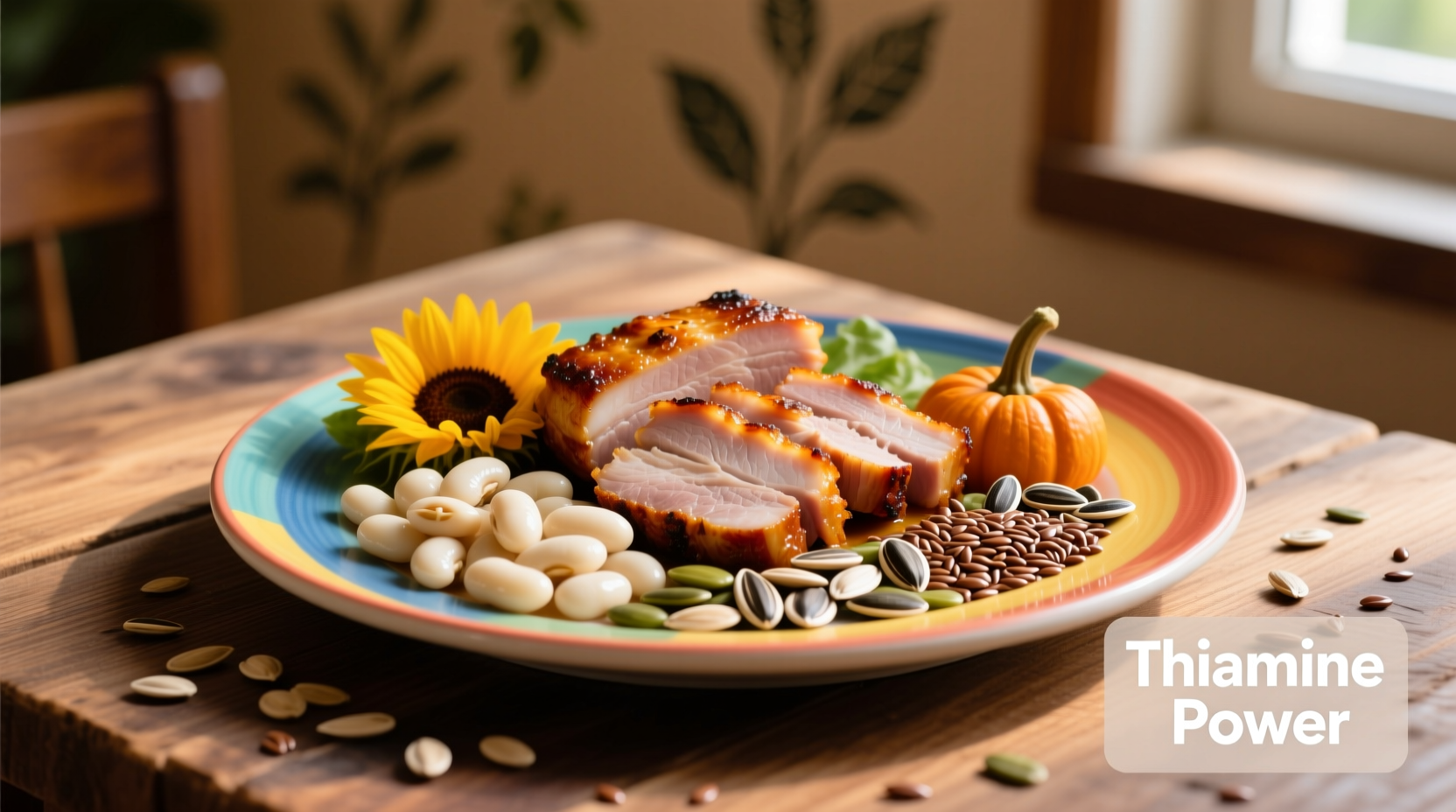Discover exactly which foods deliver the most vitamin B1 to support your energy levels and neurological health. This guide provides science-backed information about thiamine-rich foods, daily requirements, and practical ways to incorporate these nutrient powerhouses into your meals.
Why Vitamin B1 Matters for Your Health
Vitamin B1, also known as thiamine, serves as a crucial coenzyme in your body's energy production system. According to the National Institutes of Health, thiamine helps convert carbohydrates into glucose, which your body uses for energy. Without adequate thiamine, your nervous system, muscles, and heart can't function properly.
The recommended daily allowance (RDA) for adults is 1.2 mg for men and 1.1 mg for women. Pregnant or breastfeeding women need 1.4 mg daily. These requirements increase for people with certain medical conditions or those who consume alcohol regularly, as alcohol interferes with thiamine absorption.

Top Food Sources of Vitamin B1: Complete Guide
Understanding which foods contain the highest concentrations of thiamine helps you make informed dietary choices. The following table shows the most potent natural sources based on USDA FoodData Central measurements:
| Food Source | Serving Size | Thiamine (mg) | % Daily Value |
|---|---|---|---|
| Fortified breakfast cereals | 1 cup | 1.5 | 125% |
| Pork chop | 3 ounces | 0.74 | 62% |
| Sunflower seeds | 1/4 cup | 0.64 | 53% |
| Black beans | 1 cup | 0.43 | 36% |
| Trout | 3 ounces | 0.32 | 27% |
| Whole wheat bread | 2 slices | 0.23 | 19% |
| Acorn squash | 1 cup | 0.20 | 17% |
Maximizing Thiamine Absorption From Your Diet
Simply eating thiamine-rich foods isn't enough—you need to consider how preparation methods affect nutrient retention. Research from the NIH shows that thiamine is water-soluble and sensitive to heat, meaning certain cooking techniques can reduce its availability.
Preservation tips:
- Avoid overcooking vegetables and grains—steaming preserves more thiamine than boiling
- Use cooking water from vegetables in soups or sauces to capture leached nutrients
- Store grains in cool, dark places as light exposure degrades thiamine
- Pair thiamine-rich foods with vitamin C sources to enhance absorption
Interestingly, the bioavailability of thiamine varies by food source. Animal-based thiamine has approximately 50% absorption rate, while plant-based sources range from 25-30% due to natural compounds that can bind the vitamin. This explains why vegetarians may need to consume slightly more thiamine-rich plant foods to meet requirements.
Practical Meal Planning With Thiamine-Rich Foods
Incorporating vitamin B1 foods into your daily routine doesn't require complicated recipes. Try these simple combinations that maximize thiamine intake while delivering delicious flavors:
Breakfast: Fortified cereal with sunflower seeds and sliced banana (provides 1.8mg thiamine)
Lunch: Black bean soup with whole wheat bread and a side of roasted acorn squash (provides 1.1mg thiamine)
Dinner: Pork chop with brown rice and steamed green peas (provides 1.3mg thiamine)
For vegetarians and vegans, focus on combining multiple plant-based sources throughout the day. A study published in the Journal of Nutrition found that regularly consuming nutritional yeast (which contains 9.6mg per tablespoon) significantly improved thiamine status in plant-based eaters.
Special Considerations for Thiamine Intake
Certain populations require special attention to thiamine consumption. People with diabetes often have lower thiamine levels due to increased urinary excretion. The American Diabetes Association recommends these individuals monitor their thiamine status and potentially increase intake of thiamine-rich foods.
Chronic alcohol consumption dramatically affects thiamine metabolism. According to the World Health Organization, up to 80% of people with alcohol use disorder develop thiamine deficiency, which can lead to serious neurological conditions like Wernicke-Korsakoff syndrome. For this population, medical supervision and potentially supplementation becomes necessary.
Older adults also face increased risk of thiamine deficiency due to reduced absorption and often less varied diets. The National Council on Aging recommends seniors include at least two thiamine-rich foods at each meal to maintain optimal levels.
Frequently Asked Questions About Vitamin B1 Foods
Can you get enough vitamin B1 from plant-based foods alone?
Yes, with careful planning. While animal products generally contain more bioavailable thiamine, combining various plant sources like legumes, nuts, seeds, and fortified grains throughout the day can meet requirements. Nutritional yeast is particularly valuable for vegans, providing exceptional thiamine content per serving.
How quickly can you reverse thiamine deficiency through diet?
Mild deficiency symptoms often improve within weeks of increasing thiamine-rich food consumption. However, severe deficiency requires medical intervention with supplements. The body stores only 25-30mg of thiamine, so consistent daily intake is crucial for maintaining adequate levels.
Does cooking destroy vitamin B1 in foods?
Yes, thiamine is heat-sensitive and water-soluble. Boiling causes the most significant loss (up to 50%), while steaming or baking preserves more. To maximize retention, minimize cooking time and use minimal water. Avoid discarding cooking liquids from vegetables and grains.











 浙公网安备
33010002000092号
浙公网安备
33010002000092号 浙B2-20120091-4
浙B2-20120091-4